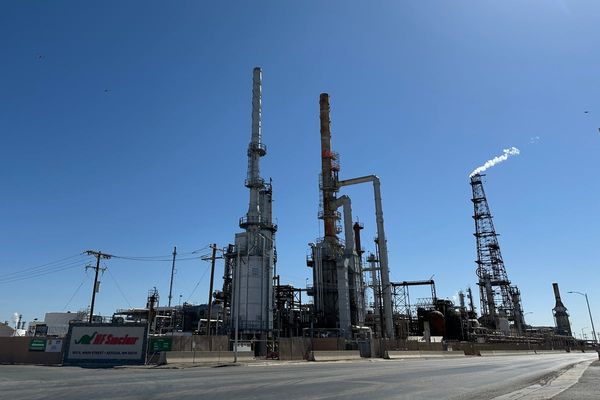
As you all likely know by now, the USDA packed a bit of a punch in their updated supply and demand figures released last week, coming in well below trader expectations for both corn and soybeans. The 95 million bushel production cut for soybeans, and 276 million bushel cut in corn production was not something traders were expecting to see, and changed the market landscape laid before us to a certain extent. This week I wanted to look at what those production changes mean as we move ahead, and what I will be watching, especially now that concerns are starting to rise in South America. Updated Ending Stocks and Stocks to UseWith the sharp cuts to production made, the USDA had to make some minor adjustments to demand in last Friday’s report. For corn, we saw feed and residual usage lowered—something that should not be surprising as the USDA has been clear, residual usage is a function of crop size. The future of trade and thoughts we are seeing front-loaded sales prompted the USDA to reduce their export outlook by 25 million bushels. Once both usage and production reductions were factored in, the USDA’s updated ending stocks figure for corn came in over 100 million bushels lower than traders were expecting. At 1.54 billion bushels, corn ending stocks are now expected to land nearly 600 million bushels lower than initial estimates put out in May. While aggressive, a record dry finish, harvest reports of soybeans coming out of the fields at 10% moisture and watching the way the cash market acted, the cut to soybean production should not have been surprising. The cut to yields dropped overall production by 95 million bushels from November estimates and took a large amount of the ‘burdensome’ supply out of the pipeline. In both corn and soybeans, the reduction in production changed the face of the market to a certain extent, especially considering how low prices have worked to encourage increased global demand. When looking at stocks to use, for soybeans we are relatively in line with historical pricing levels versus stocks to use, but for corn, you could argue we may be a touch too cheap price-wise for 10.2%. What Does it Mean?While for soybeans the drop in carryout is supportive to price, the extent to which it supports old crop prices is likely to be different than what we see in corn. For beans, 380 million bushels is still more than adequate from an ending stocks standpoint, especially with the uncertainty coming at us in trade and biofuel demand, as well as the influx of new supply coming available out of Brazil in just a handful of weeks. For corn, old crop is where the tightness lies currently in the eyes of traders, though many still question where final demand lies, insisting the large export book is front-loading. The rise in prices we have seen over the last few months in corn, after prices bottomed out well below the cost of production in early September, coupled with the increased need for cash, has pushed the farmer to be a far more aggressive seller this year than last, with over 60% of farmer bushels estimated to have already been sold. This push to move corn into the pipeline has allowed for a softening of spreads and a weakening in basis that should not come as a surprise. Some will say that the weakness in spreads and basis is a sign of more available supply than demand and they’re right, you can’t move 60% of the crop into the pipeline in the first 35-40% of the year and expect it to all be absorbed. It would be far more worrisome to see that level of farmer movement with continued signs of cash market strengthening than what we are seeing now. Trump on Trade and BiofuelsOf course, how the Trump administration approaches trade, and biofuels will have a massive impact on demand and subsequently price. Many want to remain negative when discussing the outlook for price under Trump, understandably so after his last term, but I still feel it is important to approach anticipated developments under Trump with caution. First and foremost, the attitude towards renewable fuels and the industry itself is very different this time around than last. Energy companies have invested heavily into renewables after the Inflation Reduction Act, some of whom are major Trump allies and unlikely to come away from the table disappointed. You could argue the same for farmers after they chose to remain behind him throughout the trade war years and after. While uncertainty remains after Biden’s release of proposed 45z tax rules, not final rules on Friday, it is probably safe to assume the lack of tax credits for foreign produced used cooking oil will stick. In addition, the significant jumps in global demand we are seeing are likely to continue with biofuels remaining the lowest hanging fruit for governments to check off numerous boxes at once. On trade, we got two very different reports this week, with the one released Monday that Trump eventually denied a bit more friendly than the one released by CNN later in the week. Whether Trump puts blanket tariffs on all ‘critical imports’ or declares an economic emergency so he can go it alone, would likely have two very different impacts on price. At this point, I would venture we land somewhere in the middle, even though most traders seem to have the worst-case scenario—or close to it—priced in. South American WeatherWhile worries remain when it comes to trade and biofuels, it feels important to point out the certainty we felt regarding the South American crop outlook has been rolled back a bit over the last few weeks. The Brazilian soybean crop will still easily be a record, though it may not be quite the monster traders were anticipating in the middle of December. Dryness in Southern Brazil, combined with too much moisture in central and northern portions of the country has taken the top end from expectations. Dryness across Paraguay and Argentina is leading to increased worries for the production outlook in both countries. While we are far from a crop failure, the chatter of 20 mmt or 700 million bushels or so of additional production over an already burdensome year-over-year production increase has all but disappeared. For corn, we have far more questions than answers as 77% of Brazil’s corn crop will be planted in the last half of January through February. Farmers will likely push to get as many second crop acres planted as they can as prices will likely incentivize production. How long the excessive moisture remains in place across parts of Brazil could impact the production outlook, with forecasts maintaining above normal rainfall throughout the next two weeks in some of the wettest areas. In Brazil, it is not so much the weather now through March that is concerning, it is whether we see an early shut off in rainfall or earlier than normal frosts, both of which are at an increased risk with La Nina present. These risks mean most Brazilian farmers will push to have the crop planted by the end of February, making planting progress a key factor in price in the weeks ahead.
In Argentina the forecast remains dry, increasing worries there. Some models have put rain in the forecast for this week, with the moisture imperative to stop deteriorating soil and crop conditions. How much rain falls, and how the forecast rolls forward will be incredibly important this week, with talk the GFS is turning much drier than the Euro and others. New Crop AcresLike Christmas stuff landing in the stores before Halloween, we were talking about new crop production and its bearish influence on price before we even had final production figures for old crop. The new crop corn and soybean ratio has been screaming we would see an increase in corn acres for months now, with traders believing it with such passion, December 2025 corn seems to just be sitting there, with all the action piled in the front. The reduction in old crop soybean supplies has basically taken away the ability for that market to absorb more than a 2 million acre reduction in plantings, as it would put us close to a 200 million bushel carryout, or at rationing levels if demand were to see minimal year over year changes. I would also like to remind folks when looking at new crop plantings, that many growers focus more on rotation than markets when making planting decisions. There’s also a cash flow factor that has to be figured in as well, in that soybeans are cheaper to grow than corn. At this point I would imagine we will see forum acres and acres in the year ahead shift, but not quite to the extent traders are expecting. In the EndIn the end, there is no way you can deny the sentiment shift likely to be driven by the change in production released Friday. Even the most bearish traders will have to say there is a bullish risk to price—or at the very least the need to see increased risk premiums added into the market from where we started the day. Now we watch South American weather and all the factors that influence grain movement out of the region. The Brazilian bean basis is likely to show signs of continued weakness as harvest starts but with the improved economic outlook in Argentina, it is possible we could see demand shifts take place especially if Argentina’s crop outlook begins to shrink. As always, don’t hesitate to reach out with any questions. Have a great week!







